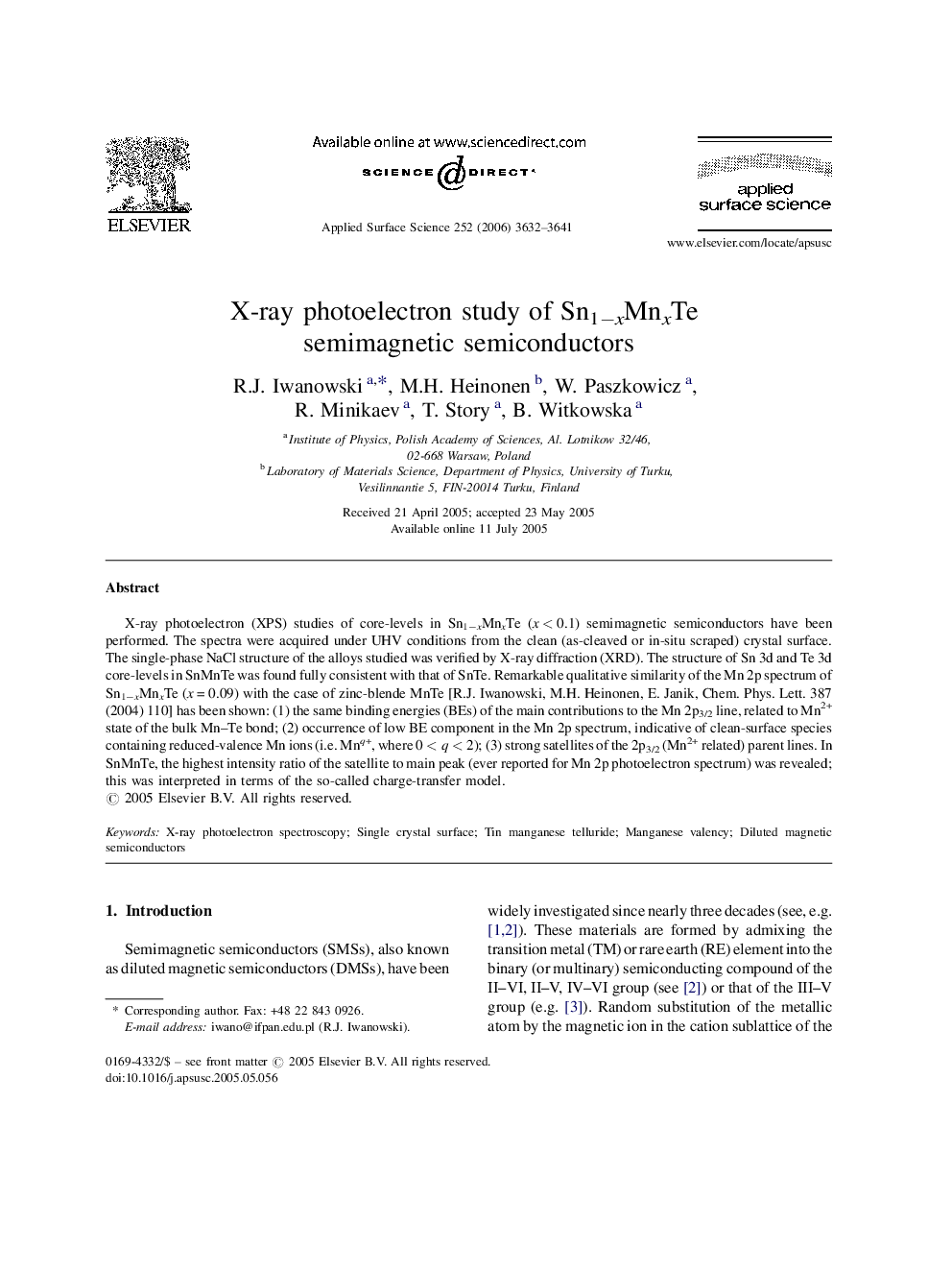| Article ID | Journal | Published Year | Pages | File Type |
|---|---|---|---|---|
| 5366661 | Applied Surface Science | 2006 | 10 Pages |
X-ray photoelectron (XPS) studies of core-levels in Sn1âxMnxTe (x < 0.1) semimagnetic semiconductors have been performed. The spectra were acquired under UHV conditions from the clean (as-cleaved or in-situ scraped) crystal surface. The single-phase NaCl structure of the alloys studied was verified by X-ray diffraction (XRD). The structure of Sn 3d and Te 3d core-levels in SnMnTe was found fully consistent with that of SnTe. Remarkable qualitative similarity of the Mn 2p spectrum of Sn1âxMnxTe (x = 0.09) with the case of zinc-blende MnTe [R.J. Iwanowski, M.H. Heinonen, E. Janik, Chem. Phys. Lett. 387 (2004) 110] has been shown: (1) the same binding energies (BEs) of the main contributions to the Mn 2p3/2 line, related to Mn2+ state of the bulk MnTe bond; (2) occurrence of low BE component in the Mn 2p spectrum, indicative of clean-surface species containing reduced-valence Mn ions (i.e. Mnq+, where 0 < q < 2); (3) strong satellites of the 2p3/2 (Mn2+ related) parent lines. In SnMnTe, the highest intensity ratio of the satellite to main peak (ever reported for Mn 2p photoelectron spectrum) was revealed; this was interpreted in terms of the so-called charge-transfer model.
